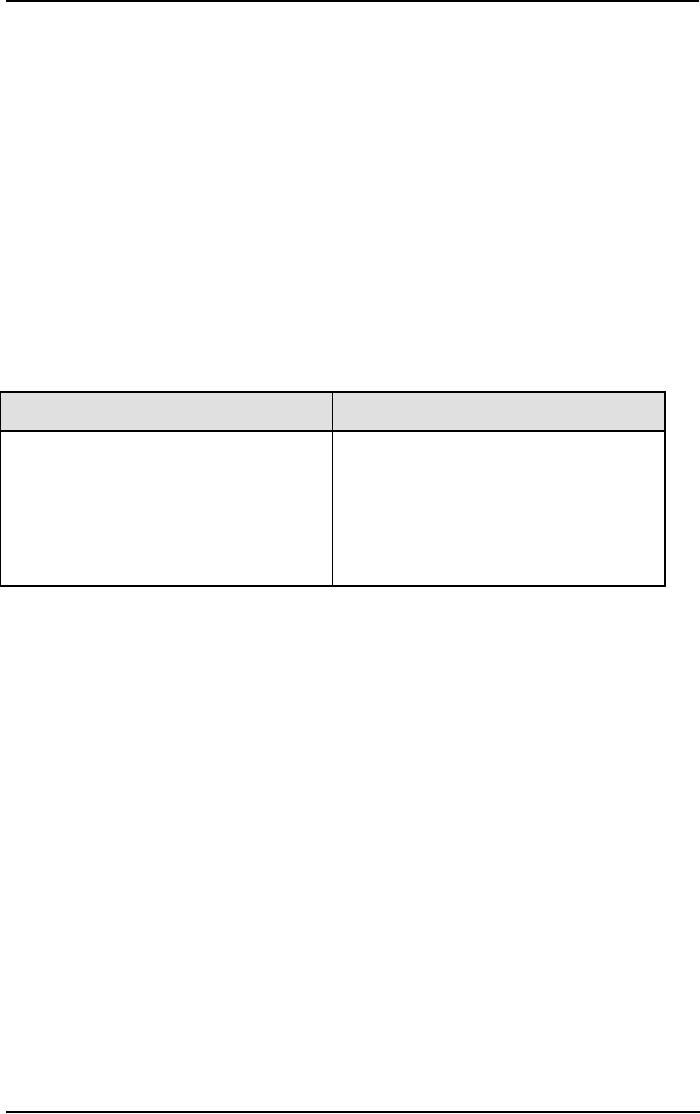 |

Leadership
& Team Management MGMT
623
VU
Lecture
28
A
TEAM-BASED ORGANIZATION
Team
Based Organization
Implementing
a team-based approach to organizational structure
can empower employees and increase
cooperation
among different skills and disciplines.
Based on the belief that
organizational goals will be
achieved
not by individuals working
together separately, but by groups of
people who share
responsibility
for outcomes and who work
efficiently and effectively in
team?
o
These
processes require highly
developed communication competencies
from all team
members.
o
Team
skills usually are divided
into two categories
Task
roles
Maintenance
roles
Characteristics
of Traditional Vs Team-based Organizations
Traditional
Team-based
Individual
command structures
Collective
structures
Manager
controls
Team
monitors
Vertical
hierarchy
Horizontal
integration
Stability
and uniformity
Change
and flexibility
One
best way to organize
Organization-specific
Managers
manage
Self-managing
teams
Traditional
vs. Best Place to Work
Changes
To
understand this we need to understand
basic concept of organizational
structure.
The
Basics of Organizational
Structure:
o
Organizational
structure defines how job
tasks are formally divided,
grouped, and
coordinated.
o
The
organization chart is a visual representation of
this division, grouping, and
coordination.
Organizational
Structure: Organizational
structure is the formal setup of task
and authority
relationships.
Structure controls the coordination of
activities and employee motivation to
attain goals.
Structure
must be continually evaluated.
Formal structure shows the intended
configuration of
positions,
job duties, and the lines of authority
among different parts of the
enterprise.
Designing
an Organization Structure: Organization
design is the process by which
leaders/managers
select
and manage aspects of
organizational structure so that an
organization can achieve its
goals.
Basic
Steps
o
Leaders/Managers
must decide how to divide the
overall tasks of the organization
into successively
smaller
jobs.
o
Leaders/Managers
must decide the basis by which to
group the individual
jobs.
o
Leaders/Managers
must decide the appropriate size of the
group reporting to each
supervisor
o
Leaders/Managers
must distribute authority among the
jobs.
Departmentalization:
Departmentalization
is the bedrock of horizontal
differentiation, which begins when
one person
assumes
a functional task. As others assume
specialized roles, a functional structure emerges,
with
people
placed in groups based on common skills or common
use of resources.
Span
of Control
119

Leadership
& Team Management MGMT
623
VU
To
avoid becoming too tall, an
organization can increase the
span of control, the number of
subordinates
a manager directly oversees.
Different companies have different
spans of control.
A
manager's span of control is limited to
the number of subordinates that can be
adequately supervised.
An
increase in subordinates exponentially
increases the subordinate relationships to be
managed. A
manager
with two subordinates manages three
relationships, but a manager
with three subordinates
manages
six. If the span of control
becomes too wide, a manager
loses control over
subordinates.
Formalization:
The
use of written rules and procedures to
standardize operations is known as formalization.
If
formalization
and standardization are
extensive, there is no room for
mutual adjustment. Employees are
held
accountable for following rules.
Centralization:
When
top managers make decisions, authority is
centralized. When lower-level
managers make
decisions,
authority is decentralized.
Organizational
Design Decisions:
Mechanistic
Organization
Organic
Organization
Highly
flexible and adaptable structure
Rigid
and tightly controlled structure
o
o
o
Non-standardized
jobs
o
High
specialization
o
Fluid
team-based structure
o
Rigid
departmentalization
o
Little
direct supervision
o
Narrow
spans of control
o
Minimal
formal rules
o
High
formalization
o
Open
communication network
o
Limited
information
network
(downward)
Mechanistic
vs. Organic
Models
Mechanistic
structures influence
people to behave in a predictable manner.
Decision making is
highly
centralized
and roles clearly defined.
Organic
structures encourage
flexibility and decentralize decision
making. Roles are loosely
defined.
Employees
perform many tasks and work
with people from various
functions.
Strategic
planning assumes that the
old structure may not work in the
new realities. It demands
the
organization
think in terms of new
approaches to solving existing and
potential issues.
Benefits
of Teams in Organizations:
Enhanced
Performance: Teams may
take many forms, i.e.
including improved
productivity,
quality,
and customer service such the
enhancements result from
pooling individual efforts
in
new
ways and continuously striving to improve
for the benefit of the
team.
Employee
Benefits: Teams always
provide the sense of self-control, human
dignity,
identification
with work, and sense of
self-worth and self-fulfillment for
which current workers
seem
to strive.
Reduced
Costs: Through
empowered teams, an organization can
reduce scrap, make
fewer
errors,
file fewer worker compensation claims,
and reduce absenteeism and turnover.
They
resulting
in significant cost reductions.
120

Leadership
& Team Management MGMT
623
VU
Organizational
Enhancements: Teams
improvements in team results a
move from a
hierarchically
based, directive culture to a
team-based culture include
increased innovation,
creativity,
and flexibility in the
organization.
Research
indicates team-based organizations
generally outperform more hierarchically
organized
structures
in terms of product and service output,
less absenteeism, fewer
industrial accidents, more
worker
flexibility, quality improvements, and
overall employee job
satisfaction.
Benefits
of Team-based Organization:
Profitability
and long term viability
organization is increased due to its
working as team based
organization.
Other benefits of team based
organizations are listed
bellow.
o
Efficient
Process
o
Flexible
Response to change
o
Improve
Effectiveness
o
Reduce
Cost
o
Increase
Innovation
o
Customer
Involvement
o
Employee
commitment
o
Skill
utilization
Checklist
for Team Based Working/
Organization Implementation
Plan:
o
To
what extent does the senior
management team agree with
the team based
working
philosophy?
o
To
what extent does the
organization need team based
working to achieve its
goals?
o
Are
team based working practices
already in place in some parts of the
organization? If so,
where?
o
Where
should we start? (Whole
organization, one area, with
well functioning
teams?)
o
How do
we move on from where we are
now?
o
What
major changes need to take
place?
o
What
resources do we need?
Possible
Pitfalls in the Introduction of
Team Based Organization
(TBO)
o
Introducing
teams regardless of
need
o
Introducing
teams without changing
systems
o
Failing
to train for TBO
o
Not
providing expert support
o
Failure
of communication within, with
and between teams
o
Failure
to establish and support TBO
objectives
Roles
of a Leader in the Team-Based
Organization
o
Defining
the team's mission
o
Building
trust and inspiring teamwork
o
Coaching
team members and group
members toward higher levels
of performance
o
Serving
as a model of teamwork, including
power sharing
o
Facilitating
and supporting team's decisions
o
Expanding
the team's capabilities
o
Creating
a team identity
o
Emphasizing
pride in being
outstanding
o
Anticipating
and influencing change
o
Inspiring
the team toward higher
levels of performance
o
Enabling
and empowering group members to
accomplish their work
o
Selecting
team-oriented members
o
Using
technology that facilitates
teamwork
Fostering
Teamwork Through Organization
Structure or Policy:
o
Designing
physical structures that
facilitate communication
o
Emphasizing
Team recognition and
rewards
o
Initiating
ritual and ceremony
121
Table of Contents:
- INTRODUCTION, ORGANIZATION THE STAGE FOR LEADERSHIP:Challenges, Value creation
- FOCUSING ON PEOPLE: THE KEY TO SUCCESS:People in the Process, Developing and Sustaining A World-class Workforce
- LEADERSHIP:Characteristics of Successful Leader, Why Study Leadership?
- LEADERSHIP (CONTD.):Characteristics of Leaders Who Fail, Why Leaders Fail?
- MANAGERS VS LEADERS:Characteristics, Effective Leadership, Respect for Diversity
- FOLLOWER-SHIP:Importance of Followers, Follower-ship Style
- LEADERSHIP PROCESS:Strategies for Cultivating Exemplary Followers, Important Traits of Leaders
- LEADERSHIP PROCESS (CONTD.):Qualities of Leaders, Self-Confidence, Integrity
- LEADERSHIP THEORIES/ APPROACHES:Personal Characteristics of Leaders, Managerial Grid
- CONTINGENCY THEORIES OF LEADERSHIP:The Fiedler Model, Situational Leadership Theory, Path-Goal Theory
- TRANSACTIONAL, CHARISMATIC AND TRANSFORMATIONAL LEADERSHIP:Visionary Leadership
- THE LEADER AS AN INDIVIDUAL:Personality, Situation, Heredity, Environment
- ATTITUDE-PERSONALITY:Job Satisfaction, Work Situation, Self - Monitoring
- BIG FIVE MODEL, MYERS BRIGGS TYPE INDICATOR (MBTI):Sub-Categories Defined, Information Gathering
- SITUATIONAL FACTORS:Social and psychological climate, Culture of the organization
- BECOMING A LEADER! WHAT DOES IT MEAN & HOW DO YOU GET IT?:Mission Statement, Leading oneself
- BECOMING A LEADER:Elements of Leadership, CONCEPT OF POWER,
- UNDERSTANDING POWER:Sources of Power, Responses to the Use of Power, Managing Political Behavior
- LEADERSHIP POWER & INFLUENCE:Positional Power, Being an Effective Leader
- LEADERSHIP AND EMPOWERMENT:Power sharing and Empowerment, Share Information
- MOTIVATION:Guidelines for Delegating, Human Resource Approach
- MOTIVATION AT WORK, MOTIVATION AND LEADERSHIP:What Factors Diminish Motivation in the Workplace
- LEADERSHIP COMMUNICATION:Communication & the Four Management Functions
- REVIEW-1:Organizational Performance, That is the Role of Management?, Leaders Vs Managers
- GROUP & TEAM CONCEPT:Groups versus Teams, Deciding When to Use a Team
- TEAM DYNAMICS:Stages of Group Development, Problem-Solving Teams, Benefits of Teams
- BUILDING THE TEAM:Leadership success requires, Strategies for Team Building
- A TEAM-BASED ORGANIZATION:Basic Steps, Span of Control, Categories of Decisions
- DECISION MAKING:Categories of Decisions, The Decision-Making Process
- TEAM DECISION MAKING:Team Problem Solving Techniques, Concept of QC
- EFFECTIVE TEAM COMMUNICATION:Team/Group Communications
- CONFLICT IN TEAM:Sources of Conflict, Scarcity of Resources, Dysfunctional Outcomes
- TRAINING/LEARNING OF TEAM:Training Methods, Phases of Learning Cycles
- LEARNING ORGANIZATION:A Litmus Test, Work Relations
- REWARDING & RECOGNIZING TEAMWORK:Compensating Teams, Individual or Team Rewards?
- MANAGING/LEADING VIRTUAL TEAMS:Communications in Virtual Organizations, Virtual Leadership
- EFFECTIVE TEAM MEETINGS:Better Meetings, Meeting Roles, Meeting Room Facilities
- LEADING TEAM:Team Leadership Structures, Leadership Demands and Duties, Leadership Direction
- REVIEW-II:Types of Teams, Characteristics of High Performance Teams, Sources of Conflict
- STRATEGIC LEADERSHIP:Strategic Management, Determining Strategic Direction, Developing Human Capital:
- LEADING CHANGE:Dynamics of Change, Change Models, Unfreeze
- CREATIVE LEADERSHIP:Awaken Your Senses, How Might These Definitions Be Integrated
- ETHICS IN LEADERSHIP:Character Traits Reflect Ethics, Manifests Honesty
- LOOKING AT THE FUTURE: WHAT COMES NEXT:Benefits of Teams, Ethical Leadership,
- TEAMWORK: LEARNING FROM NATURE:Social Behavior, Termites, Learning from Nature